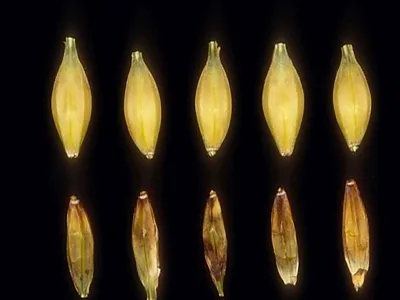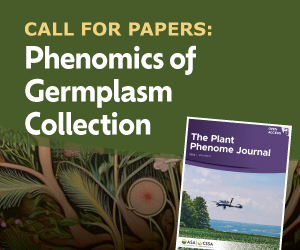Fighting Fusarium on Multiple Fronts: From Breeding to In-Field Management

Fusarium head blight has grown over the past 20 years into one of the world’s most devastating diseases of wheat and other small grains, such as barley, oats, and triticale.
One reason FHB is so damaging is that it presents farmers with not one, but two, challenges. First, serious outbreaks of FHB can cause yields to plummet. But the bigger problem is the loss of grain quality—and, thus, market value—due to a mycotoxin produced by F. graminearum: deoxynivalenol (DON), also known as vomitoxin. Meanwhile, only a handful of moderately resistant wheat cultivars are available today, forcing farmers to rely on fungicides or other practices, such as crop rotation, to combat FHB.
In this issue, read about how plant breeders are fighting back against FHB and what management practices are being implemented in the field.
Table of contents
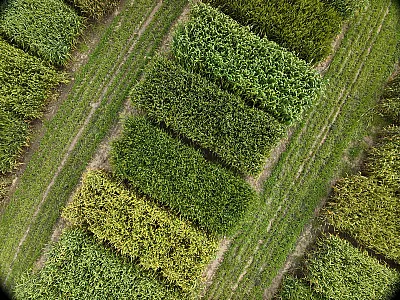
Blending advanced AI and ‘old school’ tools to assess Fusarium head blight severity
Plant breeders who study the fungal disease of wheat, Fusarium head blight (FHB), often screen wheat for resistance to FHB inside Fusarium “nurseries”: warm, humid greenhouses that foster growth of the FHB pathogen, Fusarium graminearum, and the spread of FHB. But the perfect conditions for FHB aren’t limited to breeding experiments these days; wet and warm weather is increasingly common in the outside world, too. As a result, FHB has grown over the past 20 years into one of the world’s most devastating diseases of wheat and other small grains, such as barley, oats, and triticale.
One reason FHB is so damaging is that it presents farmers with not one, but two, challenges. First, serious outbreaks of FHB can cause yields to plummet. But the bigger problem is the loss of grain quality—and, thus, market value—due to a mycotoxin produced by F. graminearum: deoxynivalenol (DON), also known as vomitoxin. Meanwhile, only a handful of moderately resistant wheat cultivars are available today, forcing farmers to rely on fungicides or other practices, such as crop rotation, to combat FHB.
In this issue, read about how plant breeders are fighting back against FHB through a combination of advanced technology and genetic studies and by searching for novel sources of FHB resistance.
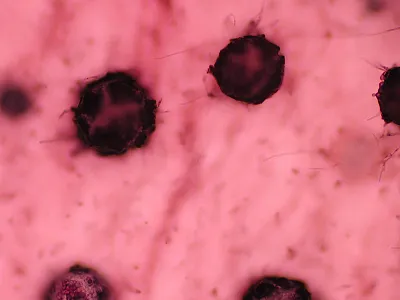
Weaponizing wheat’s defenses
Key to developing resistance may lie in helping wheat modify its response to Fusarium
Plant breeders who study the fungal disease of wheat, Fusarium head blight (FHB), often screen wheat for resistance to FHB inside Fusarium “nurseries”: warm, humid greenhouses that foster growth of the FHB pathogen, Fusarium graminearum, and the spread of FHB. But the perfect conditions for FHB aren’t limited to breeding experiments these days; wet and warm weather is increasingly common in the outside world, too. As a result, FHB has grown over the past 20 years into one of the world’s most devastating diseases of wheat and other small grains, such as barley, oats, and triticale.
One reason FHB is so damaging is that it presents farmers with not one, but two, challenges. First, serious outbreaks of FHB can cause yields to plummet. But the bigger problem is the loss of grain quality—and, thus, market value—due to a mycotoxin produced by F. graminearum: deoxynivalenol (DON), also known as vomitoxin. Meanwhile, only a handful of moderately resistant wheat cultivars are available today, forcing farmers to rely on fungicides or other practices, such as crop rotation, to combat FHB.
In this issue, read about how plant breeders are fighting back against FHB through a combination of advanced technology and genetic studies and by searching for novel sources of FHB resistance.
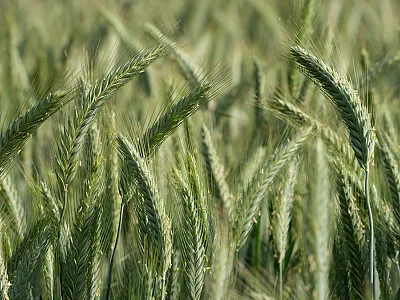
Breeders discover new hope for Fusarium resistance in triticale
Plant breeders who study the fungal disease of wheat, Fusarium head blight (FHB), often screen wheat for resistance to FHB inside Fusarium “nurseries”: warm, humid greenhouses that foster growth of the FHB pathogen, Fusarium graminearum, and the spread of FHB. But the perfect conditions for FHB aren’t limited to breeding experiments these days; wet and warm weather is increasingly common in the outside world, too. As a result, FHB has grown over the past 20 years into one of the world’s most devastating diseases of wheat and other small grains, such as barley, oats, and triticale.
One reason FHB is so damaging is that it presents farmers with not one, but two, challenges. First, serious outbreaks of FHB can cause yields to plummet. But the bigger problem is the loss of grain quality—and, thus, market value—due to a mycotoxin produced by F. graminearum: deoxynivalenol (DON), also known as vomitoxin. Meanwhile, only a handful of moderately resistant wheat cultivars are available today, forcing farmers to rely on fungicides or other practices, such as crop rotation, to combat FHB.
In this issue, read about how plant breeders are fighting back against FHB through a combination of advanced technology and genetic studies and by searching for novel sources of FHB resistance.
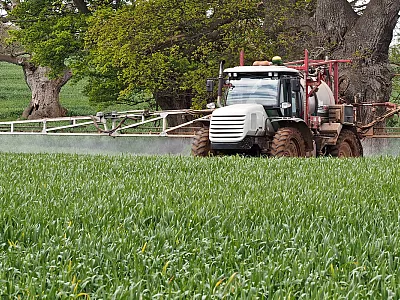
How to optimize fungicide application for Fusarium head blight management
Applying fungicide to manage Fusarium head blight (FHB) in small grains is a complex task that goes far beyond just spraying. This article discusses selection of fungicides and nozzles and breaks down how droplet size, water volume, boom height, and sprayer speed affect application efficacy. Ultimately, integrated strategies—from variety selection to real-time disease forecasting—are key to management. Earn 0.5 CEUs in Integrated Pest Management by reading the article and taking the quiz.


